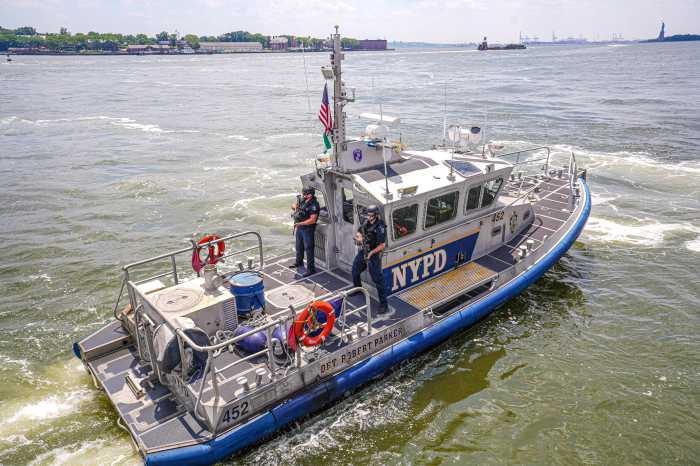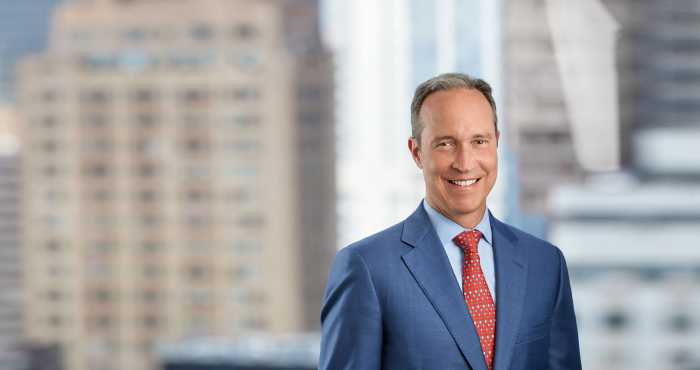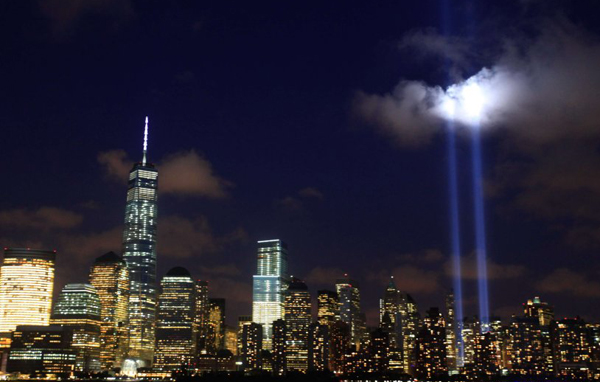
The powerful spotlights of the annual Tribute in Light have been a tradition since 2002.
BY BILL EGBERT, ALEX ELLEFSON AND COLIN MIXSON
We all recall the vaunted heroes of 9/11 — the first responders who rushed to the burning towers and gave their lives saving thousands from certain death, and their compatriots who toiled for weeks on the smoldering pile to retrieve the remains of those who never made it out.
But it was the residents who lived Downtown when the attacks tore a hole in Lower Manhattan, and who remained through the cleanup and rebuilding that followed, who are the heroes of Downtown’s eventual resurgence.
The local business people who struggled to keep their shops and restaurants open, and the companies that returned to their Downtown offices when the dust settled, are the heroes of Lower Manhattan’s economic revitalization.
After the most devastating foreign attack on U.S. soil in history laid waste to the heart of America’s greatest city and traumatized the nation, it was the people closest to the destruction who defied despair and resolved to remain and rebuild.
Downtown Express spoke to several of these individuals who took leadership in the aftermath to repair the community, in ways large and small, and helped rebuild Downtown even better than before.
‘It was bedlam’
Pat Moore and her husband were in their third-floor apartment directly across from the Twin Towers when the first plane struck. She remembers looking out the window at the horror unfolding outside her home.
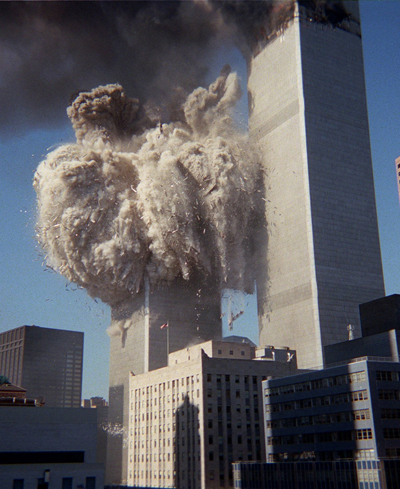
The South Tower collapsed first, followed nearly 30 minutes later by the North Tower, taking 2,973 souls with them.
“Fire came raining down from all this paper flying out the hole where the plane hit. People were pouring from the World Trade Center. They were screaming and their faces were black with soot. It was bedlam,” she recalled.
Moore — who stayed home on September 11, 2001 to vote in the primaries — fled with her husband to a friend’s apartment near City Hall. They were huddled around the television watching the news when both towers crashed to the ground. The later collapse of WTC 7, which pushed clouds of smoke around their friend’s home, forced them to another apartment on Canal St.
“I’ll forever be grateful I was with my husband when it happened. I didn’t have to worry about where he was,” she said. “But we lost everything — pretty much everything, except for what we had when we ran out the doorway.”
When Moore and her husband returned home four days later — after a sympathetic police officer snuck them past security — they found that almost two tons of debris had crashed through their windows and buried the apartment.
“Everything that was in the World Trade Center came into our apartment,” she said. “There were huge boulders and a computer from one of the towers. There was stuff everywhere.”
Moore said her neighborhood, where she has lived since 1977, was unrecognizable in the days immediately after the attacks.
“It looked like Dresden after the war,” she said. “Everything was blown out, everything was gray, cars were crushed in. Think of a disaster movie.”
It took almost two years to move back into their apartment. Cleaning out the debris from the Twin Towers was made even more difficult, Moore said, because a broken pipe flooded her apartment when her landlord turned the water back on — turning most of the toxic dust into cement.
The challenges that accompanied the recovery drove Moore to become a member of Community Board 1, where she is now chairwoman of the Quality of Life Committee. She remembers long stretches with pounding construction work taking place at all hours.
“I would call the Port Authority director’s office at 2 a.m. and stick the phone up to the window and say ‘Do you hear this?’ That’s when you really understand insanity,” she said.
But as tough as it has been, Moore said she’s pleased to see how her neighborhood has bounced back in ways she never expected.
“It used to feel like a tiny little neighborhood. The workers would leave at five, and that’s when a lot of businesses would close,” she said. “Now the population has tripled. It’s completely different than how it was before the attacks 15 years ago.”
‘Our community was devastated’
Joan Mastropaolo was at her office in Jersey City when she watched the first plane crash into the North Tower — a block away from her home in Battery Park City.
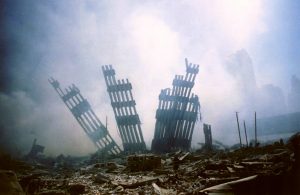
The 9/11 attack suddenly transformed the heart of Downtown in to “Ground Zero.”
“I saw it come roaring down and get swallowed up into the tower,” she said. “I knew it was an attack. The plane made no attempt to go around the tower. There’s no way a pilot couldn’t miss the damn building.”
She called her husband, who was at home in the shower when the first plane struck. However, he was near the window when the other plane crashed into the South Tower.
“He was frantic when he called me,” she said. “He told me there was another explosion. It felt like an earthquake.”
Her husband evacuated the building and it would be six days before they returned home to find their apartment swallowed by debris. They found another apartment in Gateway Plaza to live and returned to the neighborhood six months after the attacks.
Mastropaolo now volunteers at the 9/11 Tribute Center, where she tells visitors what is was like to be a Downtown resident after the attacks.
“Our community was devastated by 9/11. But this community has proved to be very strong and resilient. Those who returned are very proud of what is has become,” she said.
For Mastropaolo, the rebuilding of the World Trade Center site has had particular symbolic power.
“I’ve celebrated every milestone of One World Trade Center. From when it first popped out of the ground to when they put the spire on top,” she said. “To me, rebuilding has sent a message that we have been reborn and come back stronger than ever.”
‘It was a really tough place to stay’
In the immediate aftermath of the 9/11 attacks, Downtown’s recovery wasn’t at all the inevitable triumph it may now seem in retrospect. At the time, angst and confusion reigned, and residents felt at the mercy of powerful forces beyond their control.
Caught between grandstanding politicians, faceless bureaucracies, competing agendas, an information blackout, and the ubiquitous dust that permeated their homes, many neighbors turned to Madelyn Wils — then the chairwoman of CB1 — to unite the residents and stand up for them.
“I watched the neighborhood go from a thriving, growing area to being completely obliterated,” Wils recalled. “And it started an extremely long process where I felt like my role was to solidify the community and represent it as best I could.”
Wils and other community leaders immediately organized ad hoc meetings for the residents to share information — the first at a basketball court on Canal St. just a few days after the attacks.
“Hundreds of people showed up because they didn’t know where else to go,” she said. “People were in shock and trying to get answers to very basic questions.”
While government agencies were focused on cleanup and recovery efforts at Ground Zero, Wils had to fight to make sure the people who lived around it weren’t forgotten. Her advocacy sometimes put her at loggerheads with then-Mayor Rudolph Giuliani, forcing “America’s Mayor” to pay attention to the needs of the Downtown community.
Wils became the lone local on the board of the Lower Manhattan Development Corporation, and played a crucial role in making sure that Downtown residents had a strong voice in the rebuilding of their neighborhood.
But Wils said it took a long time before life started to feel normal again.
“Fires at the World Trade Center burned for months, the cars on the street were crushed, there were men with guns guarding security checkpoints. Everything was a reminder of all the people who died that day,” she said. “It was a really tough place to stay.”
Not everyone did, Wils noted.
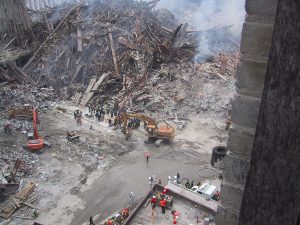
The view from a local apartment in the days after 9/11.
“Most of the community didn’t return home for months, and almost one-third never returned,” she said.
Wils was able to use her position on CB1 and the LMDC, as well as a later appointment to the city’s Economic Development Corporation, to steer funds towards new schools and parks aimed at making the neighborhood more livable.
Under her leadership, CB1 raised $12 million for the construction of Millennium High School, which opened barely two years after the 9/11 attacks. Downtown has since resoundingly rebounded — adding three more public schools to accommodate a residential population that’s now more that double what it was before the attacks. And as new residents have flocked to an area that many once fled, retail development has followed, with an ongoing influx of culinary landmarks and shopping destinations turning what had previously been a somewhat sterile office district into one of Manhattan’s hottest neighborhoods.
“It took a very long time,” Wils said, “but Lower Manhattan has become what we always thought it could be.”
Staying was an ‘act of heroism’
Anthony Notaro, the new chairman of Community Board 1, was in Denver on a business trip when the airplanes struck the Twin Towers. The longtime Battery Park City resident — stranded more than 1,700 miles from his home — watched live television broadcasts show the collapsing towers blanket his neighborhood in rubble.
Notaro went to stay with family in New Jersey when he returned to the East Coast. Like many Downtowners, he was not able to live in his home for more than two months.
“You couldn’t come back because the whole neighborhood was a crime scene,” he said. “Three thousand people were murdered and more than 1 million square feet of commercial space was destroyed in a few hours. That’s what happened here.”
The neighborhood has since clawed it way out of the devastation — and in many ways has returned stronger and more vibrant than before the attacks. New residents are flocking to the community, which has one of the fastest growing populations in the city.
However, Notaro explained that while the neighborhood was buried in debris during the weeks after 9/11, the commitment of many residents to return home felt like an act of defiance.
“The neighborhood was devastated. The people who came back to their apartments and kept going to work were part of a small but important act of heroism,” he said.
The resolve of Downtown residents to stay on their community laid the foundation for the area to rebound, Notaro said. And while the recovery brought unexpected challenges — such as overcrowded schools, traffic congestion, and a spike in residential garbage — he said it has also been gratifying to see the neighborhood become livable again.
Notaro, who has been a CB1 member for more than 15 years, listed the opening of new schools and neighborhood parks as some of the biggest victories during the rebuilding effort.
“It’s taken 10 to 15 years, but it’s amazing to see the community come back from such a devastating tragedy,” he said. “There have certainly been a lot of unexpected problems caused by the rebuilding, but if we are able to come back from what happened on September 11, I think everything else is solvable.”
‘Yeah, we’re back’
Doug Van Horn was there in Battery Park City on that terrible day fifteen years ago. As the senior manager of education and nature programs for BPC Parks, he was getting ready for the Preschool Play program that Tuesday morning when the towers came down.
“After the second tower fell, the dust cleared enough to see a bit,” he said. “I was amazed to see all the boats coming across the harbor towards us.”
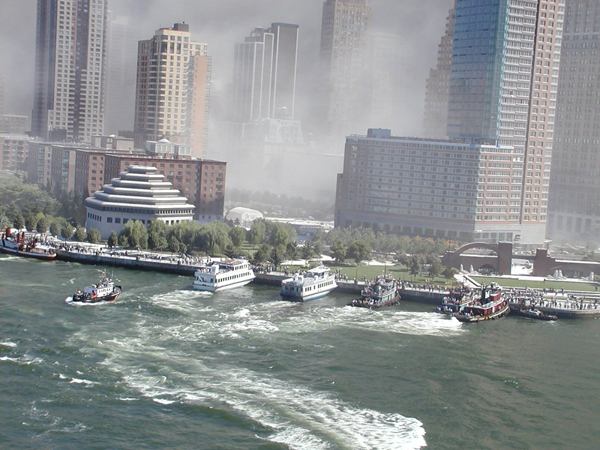
Commuter ferries pulled directly up to the Battery Park City esplanade to load up panicked survivors for transport across the Hudson.
The hundreds of mostly civilian vessels that converged on Lower Manhattan on 9/11 helped evacuate as many as half a million people from the area that day, and Van Horn spent much of his morning helping terrified BPC residents onto the boats before finally boarding one himself and heading for New Jersey.
There he ran into a family he knew who was actually on their way to he Preschool Play session that morning.
“In the months that followed, our focus was getting the programs back for the community,” van Horn said.
It was tough going in the early days, with so many BPC residents exiled from their homes, but it was only a mater of weeks before he had the programs running again and families started trickling back — including the family he ran into in New Jersey.
“I’d see them,” he said, “but there was only a handful of people at first.”
Doing his part to help restore a sense of ease and normalcy to the community, Van Horn even took to toting baseball gear out to Wagner Park and inviting passing kids and families to play catch.
It was the well-attended Preschool Play program on the one-year anniversary of the attacks that finally felt like turning a page.
“It was another beautiful day in September,” he said, “and seeing so many kids there having fun, it was enough to feel like, ‘yeah, we’re back.’”
Since then, Van Horn, who has been with BPC Parks since 1999, has seen Downtown and the BPC community more than just recover, but also improve.
“This is a better place in a lot of ways,” he said, citing the heightened participation in the expended parks programs.
There were about 500 events this summer with 40,000 participants, according to Van Horn.
“Those numbers are beyond what we use to have before the attacks,” he said.
‘Inspiring to see’
Captain Patrick Harris was among that armada that came to the rescue of stranded Downtowners on 9/11.
The captain of the historic sailboat Ventura, who operates out of Battery Park City’s North Cove Marina, recalled the sight of the ad hoc flotilla coming across the harbor.
“I saw this V-shaped formation of about a half a dozen or so tugboats charging up in our direction,” Harris said. “It was actually very inspiring to see that, knowing those guys were going in there and that’s where all the trouble was.”
Harris took a few boatloads of survivors to safety on the Ventura, before he docked the nearly century-old sailboat to help crew the larger, more powerful Royal Princess, a party boat that was filled beyond capacity over and over that day, ferrying about 300 people each trip.
His most poignant memory of that day, however, came when he was still aboard the Ventura, ferrying his first mate’s family across the Hudson as the Twin Towers still burned. Their mother had been on a bus heading to Newark Airport when news broke of the attack, and she immediately disembarked. She knew her whole family was near the World Trade Center, and she made her way to the coast in a panic.
There, as she helplessly watched the towers burn, she saw an approaching boat that she recognized — the Ventura — and on the deck was her family.
“That’s something I’ll never forget,” said Harris. “It was one of those acts of God, where she just happened to be there and was standing aghast and suddenly saw the Ventura and all of her family safe.”
The waterborne evacuation of Lower Manhattan was one of the largest of its kind in history, rescuing as many as half a million souls, and it was carried out largely by civilian vessels spontaneously volunteering to help, according to a recent book on the effort, “American Dunkirk.”
And the bravery of the rescuers was matched by the gratitude of the rescued, according to Harris.
“We were unloading people off the Royal Princess, standing at the gangway helping them off, these disoriented New Yorkers, not knowing where they were, and about a third of them stopped and touched my arm and said, ‘Thanks for helping out,’” Harris recalled. “It made me reflect that this is a culture we can be proud of. They took a big shot, they got back up, and they kept their manners.”
‘I wanted to do something to help’
Before she took a leading role in establishing the 9/11 Tribute Center, Jennifer Adams-Webb went Downtown in the days after the attacks because she just wanted to help.
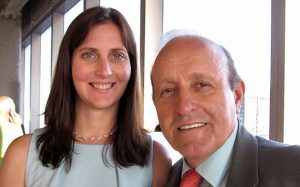
Jennifer Adams-Webb co-founded the 9/11 Tribute Center in 2006 with former firefighter Lee Ielpi, who lost his firefighter son in the attacks.
Though she had worked in the World Trade Center before the attacks, and still had people she knew there, Adams-Webb was on the Upper West Side when the towers collapsed, taking the life of one of her friends. As rescue workers swarmed over the smoking pile, she went down to the site to do what she could for them.
“Like many New Yorkers, I wanted to do something to help,” she said, “so I went down there and started handing out food to the first responders.”
As she got to know the firefighters, police officers and construction workers picking through the debris, and particularly the distraught family members waiting in vigil hoping their loved ones would be found, Adams-Webb bonded with the people most affected by the calamity. So when she saw how difficult it was for family members of 9/11 victims not working for the city to get information about the recovery mission, she put her management skills to work in February 2002 creating a network to keep them informed — the seed that eventually grew into the September 11th Families’ Association, which she now serves as CEO.
Working with former firefighter Lee Ielpi, who lost his firefighter son, Jonathan, in the towers’ collapse, Adams-Webb helped turn the loose network of victims’ families into a powerful force in the rebuilding of Lower Manhattan.
“We worked to give the families a voice in what happened to the area,” she said, reminding the many players working to rebuild the WTC site that it wasn’t just a disaster zone to be rebuilt, but the final resting place of thousands of people.
Adams-Webb got the idea for the 9/11 Tribute Center while working for the Families’ Association out of an office overlooking the fenced-off site that was still called Ground Zero nearl five years after the dust had settled and drew a steady stream of tourists.
“Thousands came down there, but there was nowhere to go,” she said. “That’s when I got the idea for a place where people could learn about what happened.”
Leading the Tribute Center gave Adams-Webb a front-row seat to watch Downtown transform from a sterile business district, to a bleak disaster area, to a churning construction site, to a bustling neighborhood.
“When I worked in the towers, everybody left at night,” she said. “Now you see people 24/7. It wasn’t that way before.”
Adams-Webb said that it was the residents — those who stayed and those who later came — who have remade Downtown even better than before.
“You can build all the infrastructure, but without the people and the community, it doesn’t work.”
‘In the frozen zone’
The residents of Lower Manhattan suffered tremendously from 9/11, but local businesses struggled in the aftermath as well. The dust, the cleanup, the security barricades — not to mention the temporary exile of so many office workers and residents — made it nearly impossible to stay in business Downtown.
“Businesses couldn’t receive deliveries, their employees couldn’t come to work and their customers were driven away. They were in the frozen zone,” said Julie Menin, who at the time owned the Vine Restaurant on Broad St. “A number of people counted us out.”
But the same spirit that made residents resolved to stay and rebuild brought the local business community together to keep Downtown’s economy afloat.
Two weeks after the attacks, Menin founded Wall Street Rising, a grassroots organization dedicated to revitalizing Lower Manhattan. The non-profit spearheaded numerous cultural and commercial projects aimed at bringing foot traffic back to the neighborhood and helping local businesses rebound.
“It was really important after 9/11 to get that sense of community back and that meant bringing back our local businesses,” said Menin. “Wall Street Rising came out of a conversation among residents and local businesses who were all struggling and wanted to be involved in advocating for the neighborhood.”
Support for the organization was enormous, and Wall Street Rising soon boasted 30,000 members, according to Menin. The group put together cultural events such as Art Downtown and Music Downtown, to draw people back to the area. Menin also created the “Do It Downtown!” discount card, which encouraged New Yorkers to patronize Lower Manhattan businesses. She said some restaurants saw their profits rebound by as much as 400 percent.
“I believe all ships are carried by a rising tide,” said Menin. “We tried to bring more people to Lower Manhattan and promote the neighborhood as a whole. I think that made an enormous difference.”
The organization’s efforts clearly bore fruit. Wall Street Rising was able to help more than 600 small businesses stay in or relocate to Lower Manhattan, according to Menin.
The economic turnaround was accompanied by a boom in the residential population, creating a new set of challenges, with Downtown becoming something of a victim of its own success.
In 2005, Menin was elected chairwoman of Community Board 1 and served for seven years, focusing on bringing more public resources to the growing community and pushing for population surveys to draw attention the need for more school seats, parks and affordable housing.
“We felt it was important to have data to quantify and predict the population growth and show people were absolutely coming to stay in Lower Manhattan,” she said.
Menin wanted to make sure that Lower Manhattan didn’t just rebuild, but led the city into the future, citing the opening in 2009 of the city’s first ever “green school,” P.S. 276, as a milestone in Downtown’s revitalization.
Menin acknowledged that Downtown’s economy has come a long way forward in the last 15 years, but she said it was residents’ commitment to rebuild immediately after the attacks that established the foundation for area to rebound.
“It’s incredible to see the progress that has occurred in Lower Manhattan, but it’s due in large part to those of us who lived and worked in the area and felt strongly that it would recover,” she said.
‘Better than we ever thought possible’
In the aftermath 9/11, Downtowners were driven to do more than simply sweep away the dust and carry on with their lives. Residents and local businesses shared an impulse to defy the destruction and rebuild their neighborhood into something even better than it was before.
And nowhere did Lower Manhattan’s passion for resurgence manifest so beautifully in as it did in The Battery, according to its keeper.
“I have always felt that The Battery is the counterbalance — a public space that is communicating how this city has come back,” said Warrie Price, founder of The Battery Conservancy.
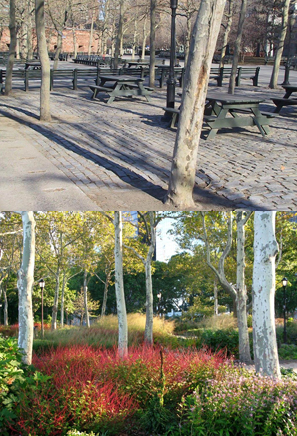
An initial grant of $8 million from the Lower Manhattan Development Corporation to remake The Bosque allowed The Battery Conservancy to rip out an acre of paving stones (above) and replace the drab expanse with a garden of perennial flowers (below).
Price founded the conservancy in 1994 after she discovered that the Battery Park City Authority had drafted a master plan to renovate the park — which is actually a city park just outside the state-controlled development — but the city had made no effort to make the grand vision a reality, she said.
Back then, the park was in rough shape. There was very little green space compared to today, and it was crisscrossed with asphalt and cobblestone paths, appearing barren and lifeless for a park.
“It was in terrible shape,” said Price.
But at that time, there wasn’t much interest in renovating the patchy public space at the tip of Manhattan, according to Price, and she struggled even to scrape together funding to repair The Battery’s upper promenade.
In the aftermath of 9/11, however, everything changed. Public support for reinvigorating the park surged along with the overall momentum to rebuild Downtown, and the newly formed LMDC offered millions of dollars in grants.
An initial $8 million grant allowed Price to transform The Bosque. An acre of Belgian block pavement was torn up and replaced with perennial gardens, turning the relatively gray space into a vast flowerbed bursting with color.
The project so impressed the LMDC that it continued to provide funding for additional renovations over the years, and local government took a renewed interest in sprucing up the space as Downtown’s residential population boomed and tourists flooded the area on the pilgrimage to Ground Zero and later the 9/11 memorial.
“The city and City Council all believed that The Battery was important to the revitalization of Downtown,” said Price.
With support from the LMDC, the city, and from locals through the conservancy’s own fund-raising efforts, The Battery has become a world-class green space of fountains, gardens, playgrounds, and amenities.
The park has since unveiled the popular Seaglass Carousel, the Labyrinth Maze, its Urban Farm, the Battery Oval, and become home to the largest collection of perennial gardens in the city, featuring nearly two-and-a-half football fields worth of flowering plants.
Once gray, sterile and often empty, over the past 15 years The Battery has literally blossomed, and become vibrant, active, and full of life — much like Downtown itself.
“It represents a grand revitalization,” said Price, “a sense that nothing will get us down, that we’re building better than we ever thought possible.”
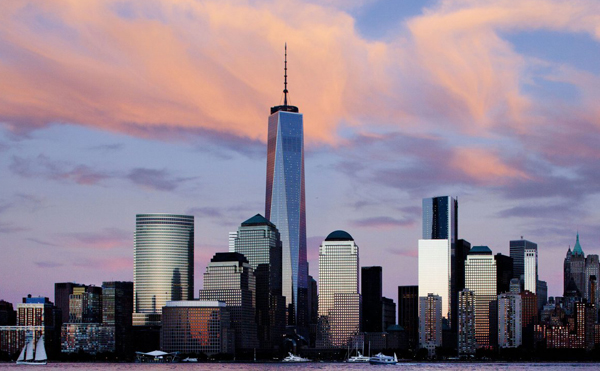
In the aftermath of the 9/11 attacks, some doubted whether the area could be restored, but Downtowners defied despair and united to remake Lower Manhattan even better than before.




